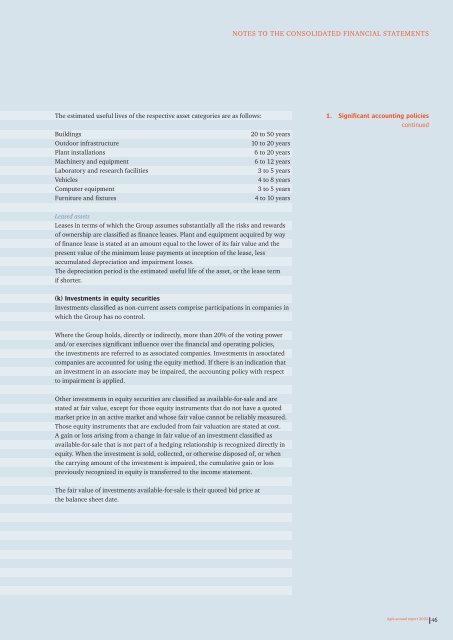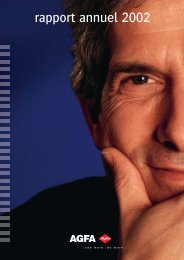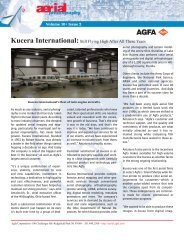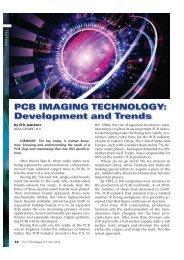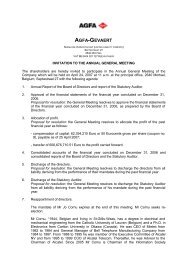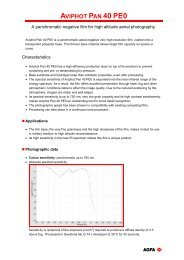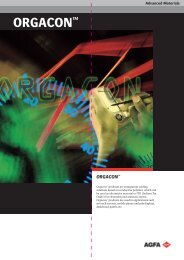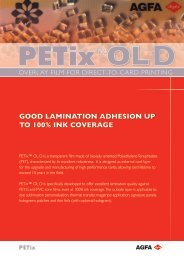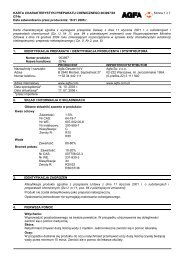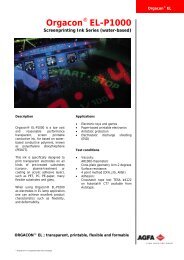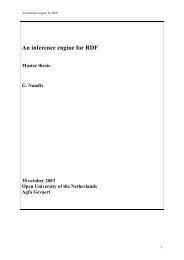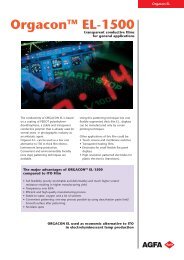Annual Report 2002 - Agfa
Annual Report 2002 - Agfa
Annual Report 2002 - Agfa
Create successful ePaper yourself
Turn your PDF publications into a flip-book with our unique Google optimized e-Paper software.
NOTES TO THE CONSOLIDATED FINANCIAL STATEMENTS<br />
The estimated useful lives of the respective asset categories are as follows:<br />
Buildings<br />
20 to 50 years<br />
Outdoor infrastructure<br />
10 to 20 years<br />
Plant installations<br />
6 to 20 years<br />
Machinery and equipment<br />
6 to 12 years<br />
Laboratory and research facilities<br />
3 to 5 years<br />
Vehicles<br />
4 to 8 years<br />
Computer equipment<br />
3 to 5 years<br />
Furniture and fixtures<br />
4 to 10 years<br />
1. Significant accounting policies<br />
continued<br />
Leased assets<br />
Leases in terms of which the Group assumes substantially all the risks and rewards<br />
of ownership are classified as finance leases. Plant and equipment acquired by way<br />
of finance lease is stated at an amount equal to the lower of its fair value and the<br />
present value of the minimum lease payments at inception of the lease, less<br />
accumulated depreciation and impairment losses.<br />
The depreciation period is the estimated useful life of the asset, or the lease term<br />
if shorter.<br />
(k) Investments in equity securities<br />
Investments classified as non-current assets comprise participations in companies in<br />
which the Group has no control.<br />
Where the Group holds, directly or indirectly, more than 20% of the voting power<br />
and/or exercises significant influence over the financial and operating policies,<br />
the investments are referred to as associated companies. Investments in associated<br />
companies are accounted for using the equity method. If there is an indication that<br />
an investment in an associate may be impaired, the accounting policy with respect<br />
to impairment is applied.<br />
Other investments in equity securities are classified as available-for-sale and are<br />
stated at fair value, except for those equity instruments that do not have a quoted<br />
market price in an active market and whose fair value cannot be reliably measured.<br />
Those equity instruments that are excluded from fair valuation are stated at cost.<br />
A gain or loss arising from a change in fair value of an investment classified as<br />
available-for-sale that is not part of a hedging relationship is recognized directly in<br />
equity. When the investment is sold, collected, or otherwise disposed of, or when<br />
the carrying amount of the investment is impaired, the cumulative gain or loss<br />
previously recognized in equity is transferred to the income statement.<br />
The fair value of investments available-for-sale is their quoted bid price at<br />
the balance sheet date.<br />
<strong>Agfa</strong> annual report <strong>2002</strong><br />
46


